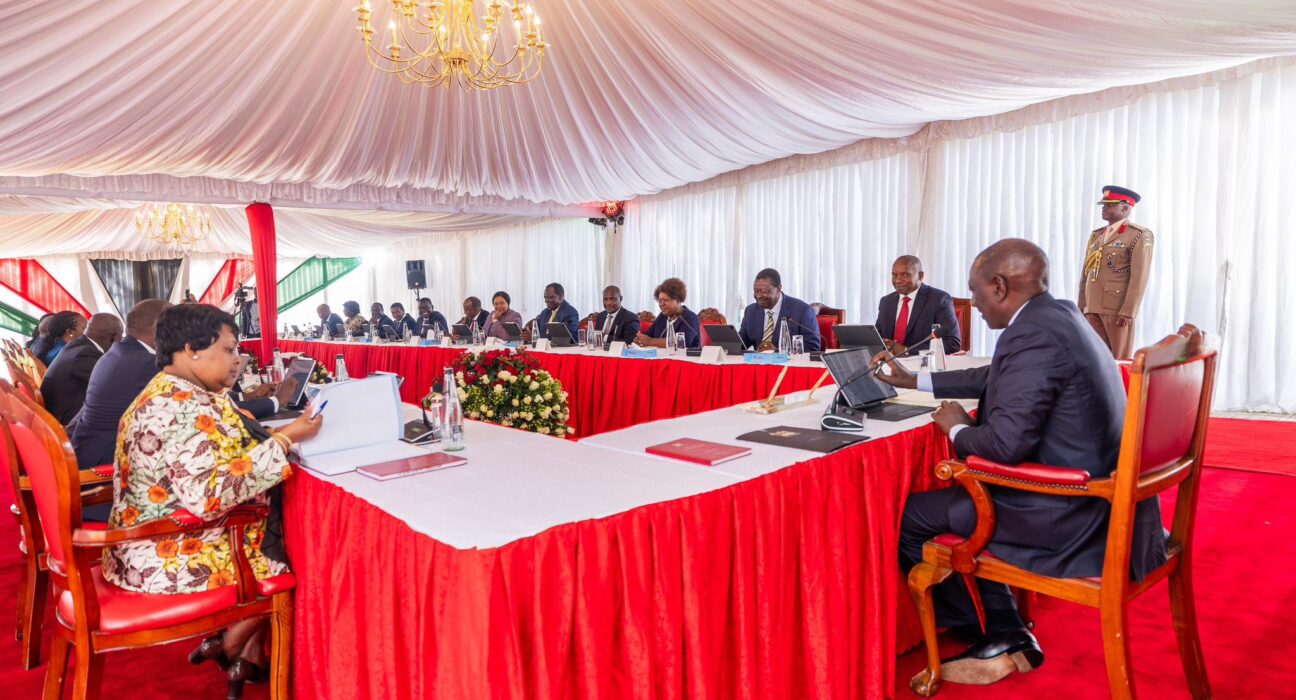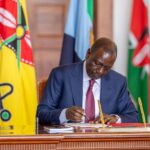President William Ruto chaired a special Cabinet meeting at State House, Nairobi, on Tuesday, during which the Cabinet approved the 2025 Budget Policy Statement (BPS). The landmark budget of KSh4.2 trillion outlines Kenya’s fiscal priorities for the 2025/26 financial year, focusing on sustainable economic growth, fiscal stability, and inclusive green development.
The approval of this statement marks a critical step in shaping Kenya’s economic trajectory, as the BPS will now be forwarded to Parliament for further debate and adoption. Below, we take a detailed look at the budget allocations, county revenue distribution, and the government’s economic focus areas.
Key Highlights of the 2025/26 Budget
The total expenditure for the 2025/26 financial year is projected at KSh4.2 trillion, which is equivalent to 22.1% of Kenya’s GDP. This allocation covers both recurrent and development expenditure, alongside county government transfers and contingency allocations.
Budget Breakdown
- Recurrent Spending: KSh3.09 trillion.
- Development Expenditure: KSh725.1 billion.
- County Transfers: KSh436.7 billion.
- Contingency Fund: KShS billion.
This budget demonstrates a deliberate focus on maintaining government operations while channeling significant resources into development projects.
Revenue Allocation Under the Division of Revenue Bill 2025
The National Government proposes a shareable revenue of KSh2.8 trillion for the 2025/26 financial year. Key allocations include:
- Equitable Share to Counties:
- KSh405.1 billion is allocated to county governments, representing 25.8% of the most recent audited revenue (KSh1.57 trillion from the 2020/21 financial year). This meets the constitutional threshold for county funding.
- Equalisation Fund:
- KSh10.6 billion will be set aside to support marginalized counties, ensuring equitable development across the country.
- Additional Allocations to Counties:
- The County Governments Additional Allocation Bill 2025 proposes an extra KSh69.8 billion, broken down as follows:
- KSh12.89 billion from the National Government.
- KSh56.91 billion from development partners.
- The County Governments Additional Allocation Bill 2025 proposes an extra KSh69.8 billion, broken down as follows:
With these supplementary allocations, the total county transfers for the 2025/26 financial year will rise to KSh474.87 billion.
County Revenue Distribution
County revenue will be distributed based on the Third Basis Formula under the County Allocation Revenue Bill 2025. This formula considers factors such as population, poverty levels, land area, and fiscal effort to ensure equitable distribution.
Key allocations include:
- Development-focused funds to boost infrastructure, healthcare, and education.
- Additional revenue for capacity-building programs to improve service delivery at the county level.
Government’s Economic Priorities for 2025/26
The 2025 Budget Policy Statement outlines the government’s strategic economic goals, emphasizing:
- Sustaining Economic Growth:
- Investments in critical infrastructure, including roads, energy, and water.
- Support for sectors like agriculture, manufacturing, and tourism to create jobs and drive GDP growth.
- Fiscal Stability:
- Measures to reduce public debt and manage deficits by improving revenue collection through the Kenya Revenue Authority (KRA).
- Inclusive Green Development:
- Policies to promote renewable energy, sustainable farming practices, and climate-resilient infrastructure.
- Investments in environmental conservation programs to combat climate change.
- Strengthening County Governments:
- Increased funding and enhanced capacity to improve service delivery in health, education, and infrastructure at the county level.
Impact on Kenyans
The 2025 BPS is expected to have significant implications for Kenyans across the country:
- Improved Public Services:
- Increased funding to counties will enhance access to healthcare, education, and other essential services.
- Economic Opportunities:
- Development projects will create job opportunities, particularly in infrastructure and manufacturing sectors.
- Support for Marginalized Regions:
- The Equalisation Fund and additional allocations will reduce disparities in development, ensuring no region is left behind.
- Environmental Sustainability:
- A focus on green development will enhance resilience to climate change, safeguarding livelihoods in agriculture-dependent areas.
Challenges in Implementing the 2025 BPS
While the 2025 Budget Policy Statement is ambitious, it may face the following challenges:
- Revenue Collection Shortfalls:
- The proposed shareable revenue of KSh2.8 trillion depends on improved tax compliance and expanded revenue bases, which may be difficult to achieve in the short term.
- Public Debt Management:
- Balancing development expenditure with debt repayment remains a critical challenge.
- Implementation at County Level:
- Weak governance and corruption in some counties may hinder the effective use of allocated funds.
The approval of the 2025 Budget Policy Statement marks a significant step in Kenya’s fiscal planning. With a focus on growth, sustainability, and equity, the budget has the potential to drive transformative development across the country. However, its success will depend on efficient implementation, robust revenue collection, and transparency at both national and county levels.
Stay informed about Kenya’s budgetary developments and how they impact you. Subscribe to our newsletter for in-depth analyses, updates, and insights into Kenya’s economic policies and opportunities.





